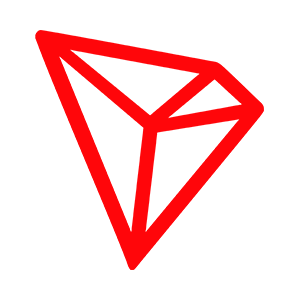- Back to menuNews
- Back to menuPrices
- Back to menuResearch
- Back to menuConsensus
- Back to menuSponsored
- Back to menu
- Back to menu
- Back to menuResearch
- Back to menuWebinars & Events
- Back to menu
About TRON
Tron (TRX) is a decentralized blockchain platform that offers high scalability and availability for decentralized applications (DApps). It has a native cryptocurrency, TRX, which was originally an ERC-20 token on the Ethereum blockchain. Tron aims to create a decentralized internet and its infrastructure, and supports smart contracts with a number of decentralized apps built on top of its network. Its decentralized finance (DeFi) ecosystem has billions in total value locked. The Tron network uses a delegated Proof-of-Stake (dPoS) algorithm, with TRX token holders delegating transaction validation to 27 "super representatives." Tron was created by Justin Sun and launched in 2017, migrating to its own blockchain in 2018. TRX is used to pay for transaction fees on the Tron blockchain, can be staked for earnings, and is used in the Tron DeFi ecosystem for financial services.
- In 2017, Tron raised $60 million in an initial coin offering (ICO). Tokens were initially allocated as follows:
For now, Tron has a supply cap of 100 billion Tronix. But unlike some other cryptocurrencies such as bitcoin, that limit is not set in stone, the Tron Foundation has said.
According to price data provider CoinMarketCap, Tron’s price reached an all-time high of $0.22 in January 2018 amid a crypto-wide bull run. For most of 2018 and 2019, Tron’s price hovered between $0.01 and $0.04. Tron’s price hit a fresh peak of $0.16 in April 2021, rising with the rest of the market as bitcoin broke $64,000 for the first time.
Tron aims to make it easier to distribute files, images, videos and other entertainment content in a decentralized way, without media tech giants such as Netflix and YouTube in the middle.
To accomplish that goal, Tron borrows some of its technology from Ethereum. Similar to the popular cryptocurrency ethereum, Tron uses a virtual machine known as the “Tron Virtual Machine,” or TVM. A virtual machine is a program that allows network contributors (called nodes) to execute Tron-based smart contracts. Smart contracts are self-executing computer codes that perform certain functions when predefined conditions are met. For example, if Bob sends 1 ETH to a certain wallet, a smart contract triggers and sends him a loan for 2 ETH.
Tron is secured by delegated proof-of-stake, a consensus mechanism where token holders deposit an amount of TRX into a wallet and elect a delegate to validate transactions on the blockchain on their behalf. With Tron, a rotating group of 27 delegates called “super representatives” are swapped out every six hours to validate new transaction data and add it to the blockchain.
The key difference that separates Tron from competitors like YouTube is that Tron is built more with decentralized file sharing in mind.
To make it easier to decentralize media and files, Tron’s architecture is split into three layers:
- The core layer: This layer deals with smart contracts, account management and the delegated proof-of-stake consensus mechanism.
- Storage layer: For storing files and other large pieces of data.
- Application layer: Where Tron developers can build their decentralized applications on the blockchain.
